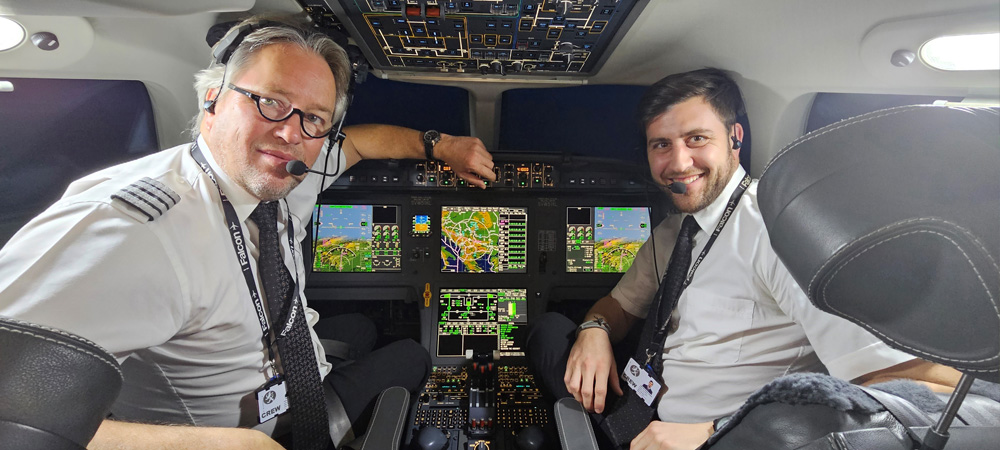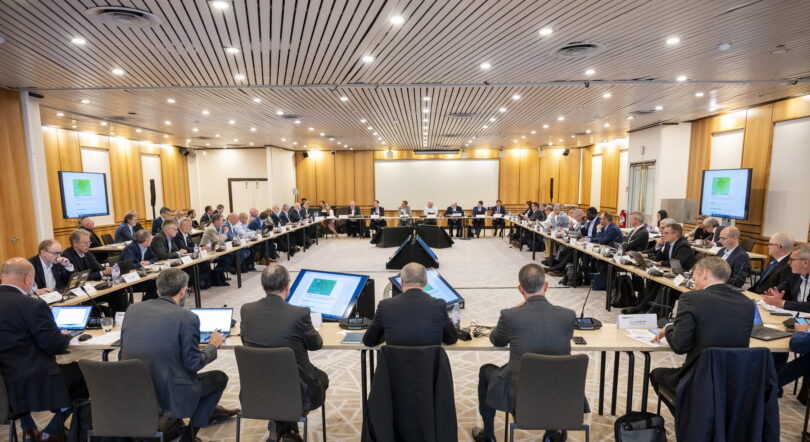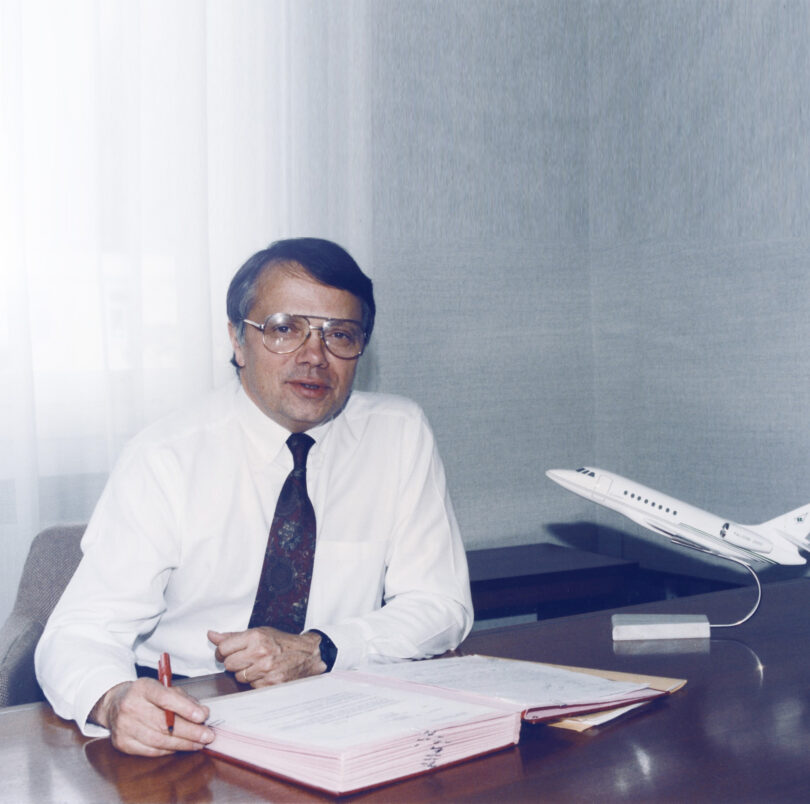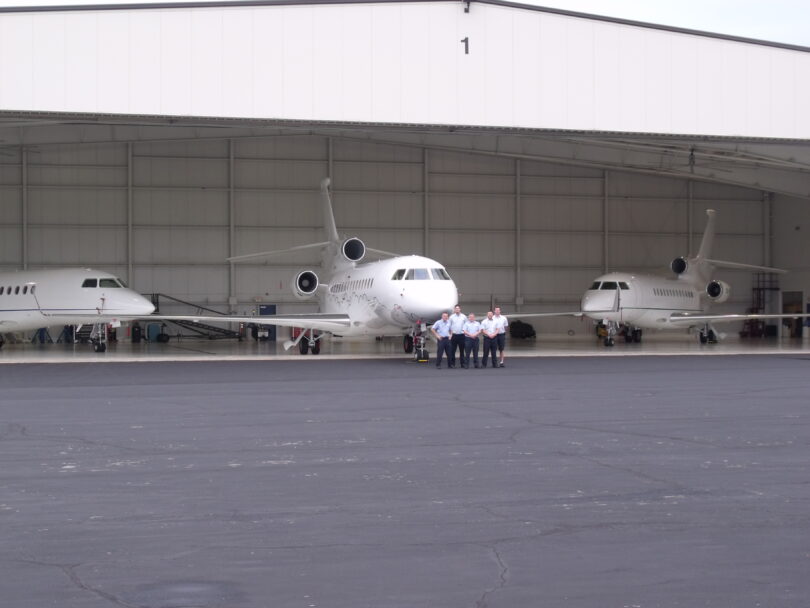I want to tell you about a Falcon operator who is getting a lot of profitable use out of a Falcon 8X and a 2000LX, even more so now that the 8X has received the first-ever EASy IV upgrade. More on that in a moment.
Dominique Valiton is managing director and chief pilot of charter company Aircom, based in Geneva. And he is very busy. Each airplane flies around 1000 hours per year. Dominique is a 21,000-plus hour pilot and he’s always training some ab-initio first officers to his very high standards. While he loves the modern avionics in his aircraft, he wants aviators with good stick and rudder skills, and he won’t compromise on that.
Plus, he says, they are flying Falcons—they have no excuse for imprecise flying!
In recent years, Aircom has become something of a family business, as son Nicolas, 32, has transitioned from experienced A&P mechanic to first officer, first on the 2000LX and now for the last three years on the 8X. The Valitons really enjoy flying together, which takes them all over the world.
Customers, they report, love the 8X on long 12-hour flights, of which they have flown many: London to Cape Town; Florianopolis, Brazil to Geneva; and Geneva to LA, to name a few.
This past December, the 8X went in for a 36-month inspection at Dassault Aviation Business Services in Geneva, which Dominique decided was a perfect time to upgrade to EASy IV—the latest generation of Dassault’s avionics system. Inspection and upgrade took 15 days, so no revenue time was lost due to the installation.
“This is a big step for safety,” Dominique told me. “Especially on the ground, where you can now see airport traffic on the navigation display. It’s a big, big improvement in foggy conditions or low light. It even sees transponder-equipped fuel trucks! The ADS-B is also great for identifying traffic in the air and enhancing situational awareness during visual approaches.”
I cannot help thinking about recent near misses at airports in the US. Airliners generally lack this kind of detailed traffic-awareness capability, and as airports and airspace become more crowded, it’s important to see it installed on more aircraft.
There is much more to EASy IV, Dominique noted. Better graphics and brighter colors. CPDLC/ATN-B for text clearances. LDTA (landing distance at time of arrival) calculations made “easy,” reducing required runway landing distance margins. Previously, pilots could make these calculations with FalconSphere. With EASy IV, this pre-arrival bit of workload is reduced.
Allow me to mention why Dassault created the EASy flight deck 20 years ago: to reduce workload and make flight tasks more intuitive; to improve situational awareness; and generally to make flying safer. EASy IV is the next step.
Now to the critique. Dominique tells me the 2D/3D airport mapping capability is great, but it needs to be available for more airports. After all, his charters take him all over the world. This is partly an issue for the chart data provider, but if it’s on a Falcon, we share responsibility. So, we have something to work on. Thank you, Dominique for sharing this valuable input and training the next generation of pilots to your high standards.
Senior Vice President, Worldwide Falcon Customer Service & Service Center Network
Dassault Aviation



